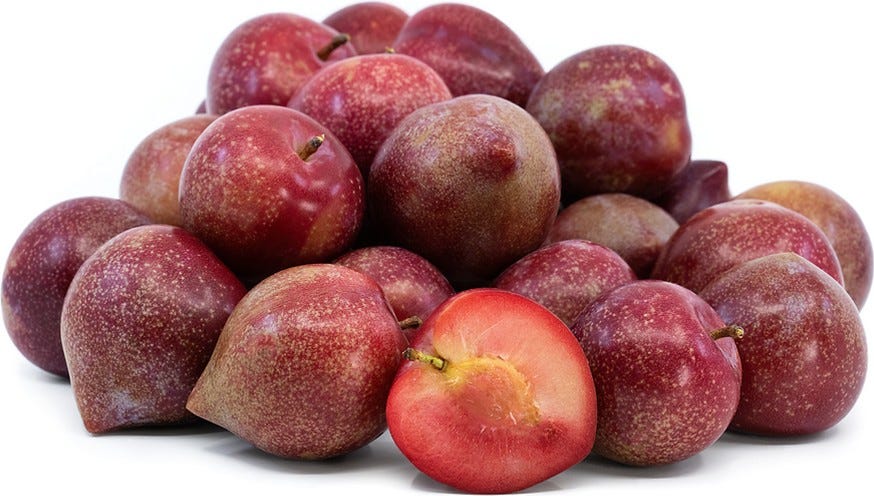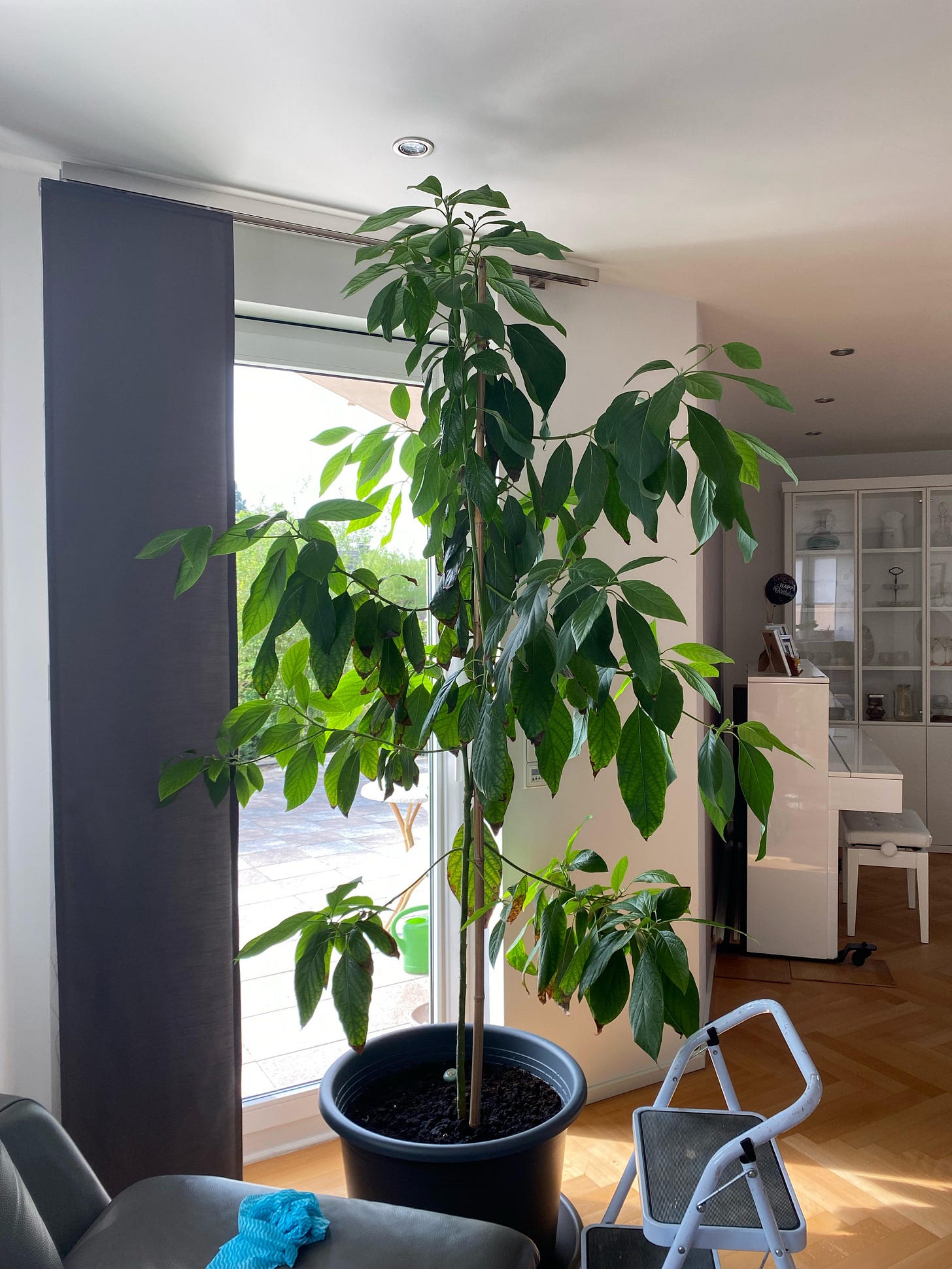HOME-GROWN FRUIT TREES FROM SEED
The Fun, the Magic, and the Reality of Growing Fruit from the Trash Can
Sowing a seed is one of the earliest and most exciting acts of “gardening” a child often experiences. In many cases, that first seed happens to be something plucked from a fruit in the kitchen. To a child, the whole idea of a small lump of dark matter — sometimes almost dust-like, sometimes as big as a golf ball yet still without life — turning into living green simply by sticking it in “dirt” and adding water is no less than pure magic. I’ve always been stirred by this kind of “magic” — the biology, chemistry, physiology, and mechanics behind the process is nothing less than astounding. Yes, still today — despite my now knowing much more of what were once mysteries to all.
It’s not just an “experiment” for children, though. Children of all ages find a need to see this miracle of life through. It’s why so many are potting up their avocado pits, lemon seeds, peach pits, and apple pips. I think everyone, not just gardeners, should watch a tiny speck of nothingness turn into a tree (yes, over the years); just the fundamental thought of that is transformative.
Children’s experiments and life changes aside and down to the dirt gardener’s level, is it all worth the time and effort to grow an avocado pit (or other fruit’s seed) from the trash can to a fruiting tree? The answer is not a black-and-white “no.” It’s more a “probably not;” with an emphasis on the concept of probability.
First off, the mixture of genetic material from the fruit’s parents — of whom you don’t fully know aside from, maybe*, who the mother (the fruit) was — expresses itself in a way almost always different from the fruit you ate. The mixture also expresses the dominant genes of the parents; these are the genes that were sidestepped by the breeder to allow the more desirable recessive genes to show themselves. In almost all cases, the crossing regresses to the more primitive, undesirable genes, the kind of manifestation found in species in the wild.
[* If the tree was a named cultivar (variety) in your backyard, then you do know the mom. If you bought the fruit at the grocery store, then you might know the mom, provided it was labeled but even then, you may pick up a ‘Haas’ avocado (THE guacamole avocado) but may actually be getting a ‘Gwen’, ‘Lamb Hass’, ‘Pinkerton’, or ‘Sir Prize’, all sub-varieties of ‘Haas’ that all are labeled as ‘Haas’ at the market.]
Even if your tree was “selfed” (the process of making sure one tree’s pollen is put onto the stigma -- the topmost portion of the female reproductive organ -- of the same tree), it’s still not guaranteed that you’ll get the same fruit. Many fruit trees are simple to complex interspecific hybrids, which means what pops up could be one species or the other or a stirred-up mix of the two species. The apple tree (Malus domestica), for instance, are back-and-forth crosses of at least two species: Malus sieversii (the “wild apple”) and Malus sylvestris (European crab). [It’s also highly probable that a DNA deep dive will also find the genes of M. baccata and M. orientalis in a bite of apple]. I can remember several seedling apples that had popped up in my grandfather’s garden (probably before I was born) and had produced fruit; we kids ate the fruits. Once. Smallish and somewhat tart, not as small or tart as crabapples I know today, but farther away than from being an actual supermarket apple.
Kind of an aside, early interspecific apple hybrids were originally called Malus pumila or “Paradise Apple.” M. pumila is still used by some botanists as the proper name for the common domesticated apple, versus M. domestica, although most taxonomists consider it simply a synonym. Both M. pumila and Paradise apple are more commonly used nowadays for regular apple volunteers, the ones with smaller and somewhat tart (albeit not overly tart) fruits.
In the fruit tree breeding world, hybridizers cross two different selected known cultivars or strains and sow hundreds (more?) of seeds that come from that cross. Of those hundreds, they can expect no more than one or two worthy of further propagating and, eventually, marketing; in some cases, they get none.** You won’t get what you ate and your chances of getting something good or better are less than that of the professional breeder who knew what the parents were and what characteristics would likely express themselves.
Another part of this is the reality that almost all fruit trees take 5 to 20 years to produce a fruit on a tree grown from a sown seed. I suppose if one has some acreage to spare, time to wait, and a strong touch of the gambler, this might be considered a worthwhile endeavor, at least in the experience of growing “your own tree.” Also remember that at the other end — the time when the tree does bear fruit — the odds are very much against eating a really good product (although the probability of getting a totally nasty, inedible fruit are really slim).
Add to this the often offered yet confused proposal that “grafting” the seedling will somehow turn it into a respectable fruit and will force it to bloom and fruit sooner. That’s not how grafting works. Grafting (“budding” in the commercial fruit tree production world) is a matter of having a “rootstock” growing in the ground and onto that rootstock is placed a piece of “scion” (the branchlet of the desirable cultivar) or, more commonly, a “bud” (again, a piece of the desirable cultivar). The seedling that you’ve grown, as is, is probably not a viable rootstock for anything and, more importantly, the practice of grafting/budding works only if you are working with a known valued cultivar. It’ll be another 7 to 20 years or so before you know that.
So, let’s say that after 10+ years, you win the seed-to-GREAT-fruit lottery and you end up deciding to “graft” your now very desirable plant. What’s kind of an academic point, but certainly for future reference here, is that grafting/budding does shorten the time from planting to fruiting versus non-grafted/budded plants. More importantly is a reminder: “grafting” is putting the desired variety (that would be your seedling) on top of a rootstock (a specially selected seedling, one chosen for any number of purposes besides fruit). That rootstock could be a rootstock you already have, such as a named variety of avocado (for your avocado seedling) or apple tree (for your apple seedling), both of which are on their own existing rootstock. In fact, grafting has become quite the sub-hobby for gardeners who indulge in orcharding; furthermore, many have taken to the extended art of multiple grafting, whereby more than one desired cultivar is put on a single rootstock (actual good-sized tree) and upwards of 50 or more grafts. To be clear, grafting is not something you do to the seedling to make the seedling produce better fruit.
This is not to discourage anyone from sowing hundreds of such seeds and making the effort to select a new and special cultivar. Or sowing but one seed and waiting for something special to come out of that “probability” machine. If you have the space, the time, and the money, as well as the interest and long-term focus, it could be fun if nothing else. Some fruit trees, even without fruit, are beautiful. Or leave it all as a good science lesson for your children (and maybe a not-so-long-term lesson for you). By the way, if you live outside of the avocado-growing regions, do you have a ceiling high enough in your house to grow an avocado tree to fruiting size?
.
Almost all store-bought “fruit” vegetables (e.g., tomatoes, peppers, melons, squash) also fall into this category (sans the grafting technology). Unless you are confident they are “open-pollinated,” the same genetic issues apply.
** Beginning in the early years of the new millennium, the sciences of gene mapping and “genetic markers” (“genomic biomarkers”) have created a huge and important jump in the fruit breeding industry. A genetic marker is a gene or DNA sequence with a known location on a chromosome. It can be described as a variation that can be observed. Up until this time, fruit tree hybridization was typically a matter of taking pollen from one plant with desirable characteristics and putting that pollen onto another plant with other desirable characteristics. The resultant babies were certainly going to be “acceptable” but there was no knowing what special characteristic was going to show itself; it would take years of growing young plants to fruiting stage before it was observable. With identifiable genetic markers, that “special characteristic” or desirable trait is now detectable at the very youngest seedling age. This is not GMO/GE, but it is also not a technology available to home gardeners.

© Copyright, Joe Seals, 2025






